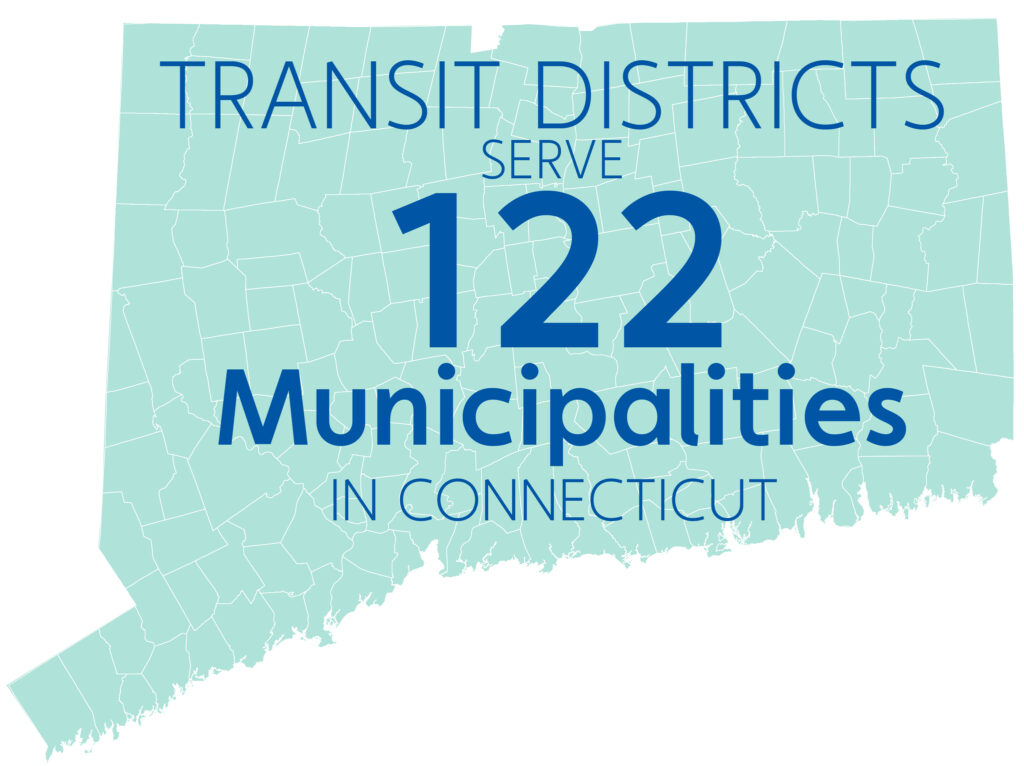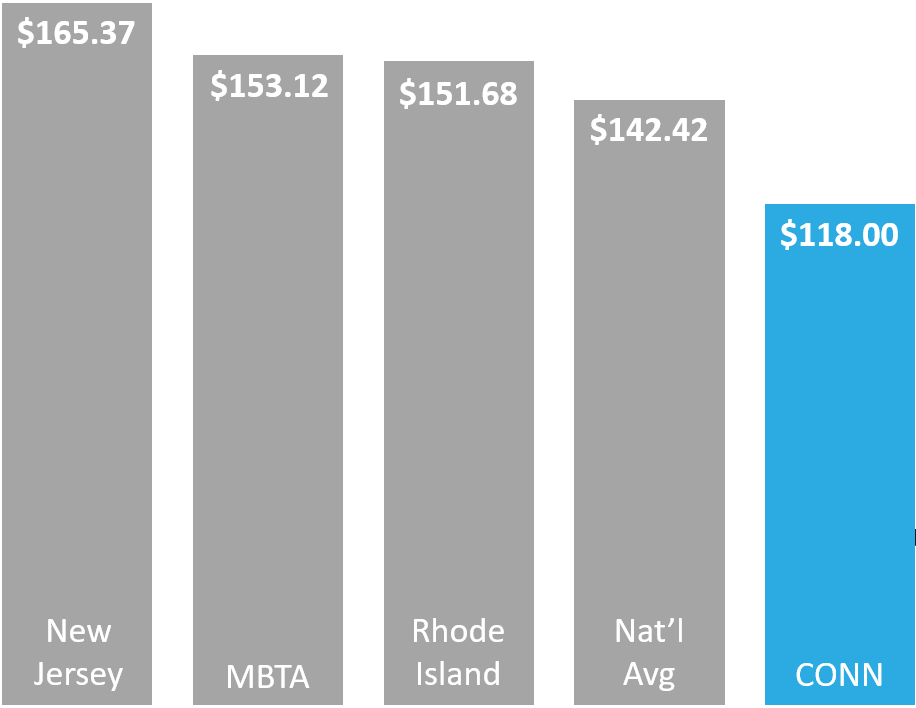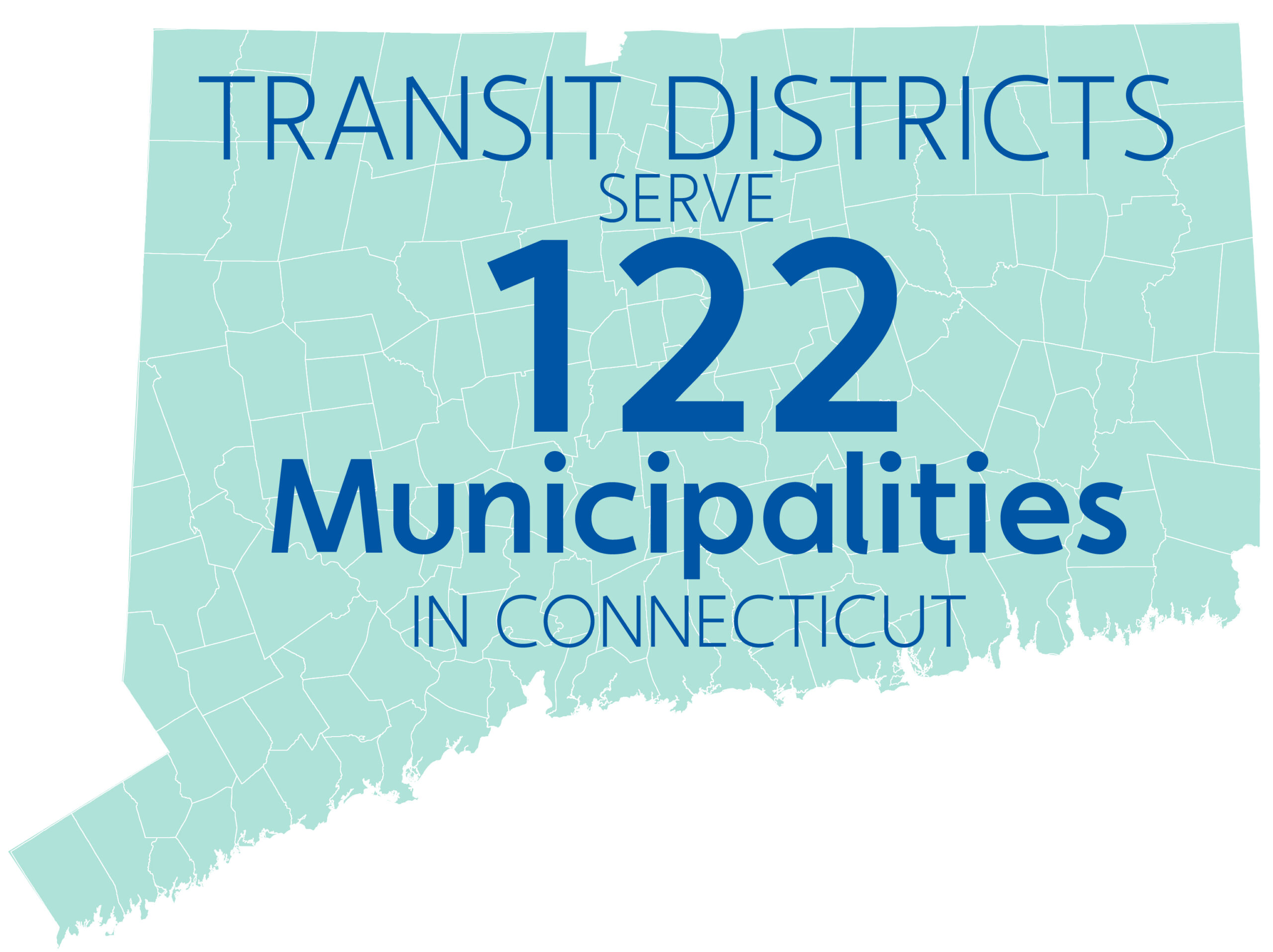 Legislative Brief
Legislative Brief
Stop the Flat Funding of Transit District Services
Serving 122 Municipalities • 10.1 Million Trips Annually • Efficient & Low Cost • Innovative & Nimble
Support Proposed Bill No. 6543 AAC The Funding of Transit Districts in Urbanized Areas.
Support Transit Districts and the Connecticut businesses and residents they serve. The language of this proposed bill would repeal the provision of Public Act 22-40, which caps funding for transit districts at fiscal year 2024 levels beginning in fiscal year 2025.
Capping State investment in Transit Districts will result in service cuts in the Transit District network in Connecticut. Transit Districts provide critical mobility for thousands of residents all across Connecticut. These operations are as important to the State’s mass transit system as any other bus or rail component and are worthy of fair and hearty State investment.
The limitation placed on funding to the State’s Transit Districts in PA 22-40 will strangle a vital part of the State’s public transportation system, if not repealed.
Support the Language in Bill No. 6543 AAC The Funding of Transit Districts in Urbanized Areas.
Transit Districts Serve 122 Connecticut Municipalities.
While there is a great deal of discussion regarding the Rail and CTtransit components of the State’s mass transit system, there seems to be a limited understanding of the importance of the Transit Districts in Connecticut, their extensive geographic coverage and the critical nature of the work they are doing. These Districts are an essential part of the State’s mobility infrastructure, reaching municipalities and residents in all corners of the State ― in urbanized as well as rural areas, and some are far from the rail lines and larger city bus systems.

Transit Districts provide 10.1 million trips annually.
In Connecticut, Transit Districts alone provide more than 10.1 million trips annually ― in urban, suburban and rural areas. In many of these communities, Transit Districts are the sole providers of door-to-door services for seniors and people with disabilities.
10.1 MILLION
TRIPS ANNUALLY
Transit Districts are innovative and nimble.
Transit Districts pilot and provide some of the most innovative transit services in Connecticut, from adopting new technologies, piloting the State’s first electric buses, providing on-demand services, and installing bus shelters and amenities.
New operating models
One of the most exciting innovations in transit today is the deployment of MicroTransit ― real-time, on-demand bus services that are cost-effective and convenient. MicroTransit services are designed to meet mobility gaps that are not efficiently met with large bus, fixed route services. Today, there are four MicroTransit models operating in Connecticut ― all by Transit Districts and evidence of the flexibility of the Districts to meet the evolving mobility needs of the State.
Transit Districts are more efficient and lower cost than many peer organizations.
Transit Districts in Connecticut are efficient, relatively low cost, and compare favorably to similar transit operators in a number of key performance indicators. Below is a comparison indicating the cost per hour for fixed route services (Source: National Transit Database 2019).
Cost Per Revenue Hour

SOURCE: National Transit Database Report Year 2019.
Transit Districts enhance quality of life.
Transit Districts provide key services that enhance the quality of life in Connecticut. Some provide fixed route service, some provide transportation services for riders with disabilities, some provide special door-to-door transportation services for seniors, and some provide all of these.

These services enhance the State’s larger quality of life goals:
- Transportation for commuters supports households, job creation, and business/economic growth;
- Transportation for high school and university students providing access to education;
- Transportation for veterans providing access to critical health care and jobs;
- Transportation for seniors allowing for aging at home in their communities;
- Transportation for riders with disabilities – providing access to gainful employment, and enabling independent living in their home communities;
- Transportation for refugees and people in reentry programs as part of a new start in life;
- Transit districts help reduce traffic congestion and contribute to clean air goals.
Transit Districts are regional and community-led.
The Transit Districts in Connecticut are a connected network, meeting urban, suburban and rural needs. In places where there is dense population, fixed route services are provided. In less dense places – often rural communities – other service delivery models are used. There is no “one solution fits all” and Transit Districts work with the municipalities in their regions to gain insights and to implement solutions that best fit the needs of that community.
Transit Districts do work that no other agencies do.

Among the bus service portion of our mass transit system, Transit Districts are the sole provider of transportation to riders with disabilities and seniors. These are specialized services performed by no other operators in Connecticut.
Flat funding is not fair and not equitable.
Flat funding Transit Districts is unfair to many residents of the State. Equity begins in the allocation of resources and investment in all areas of the State should be considered in the appropriation and allocation of transit operating investment.
Support the Language in Bill No. 6543 AAC The Funding of Transit Districts in Urbanized Areas.
Newsletter Signup
Like what you see? Signup for our newsletter!
 Alerts
Alerts





